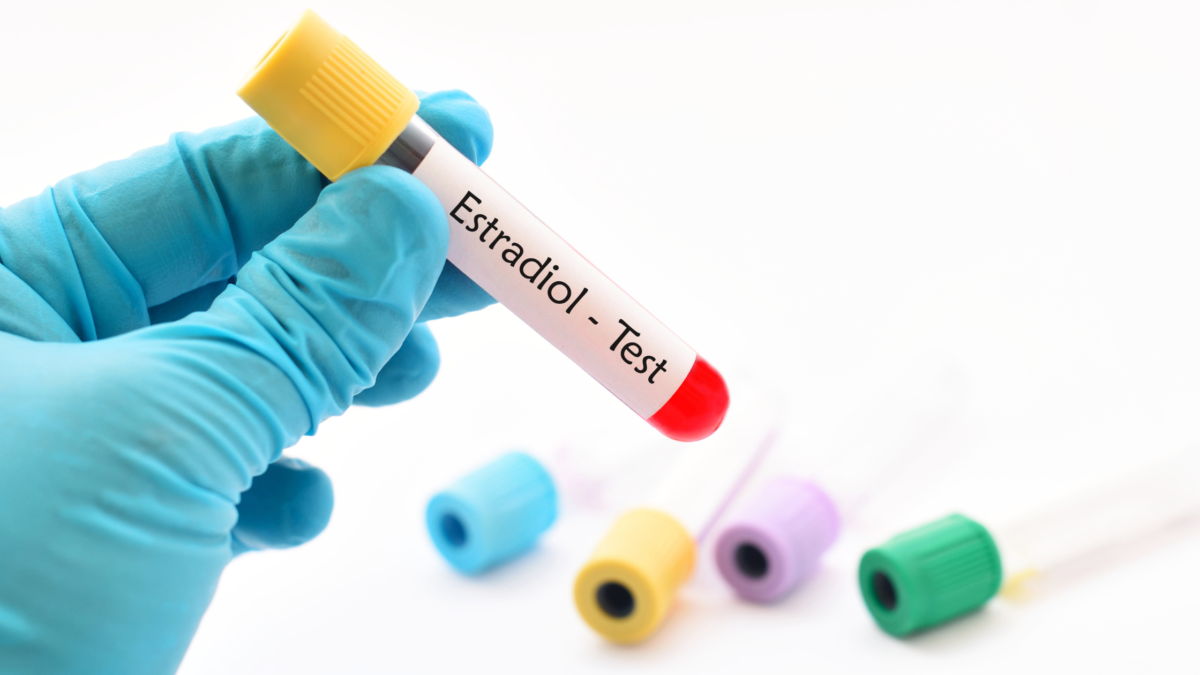


Medically Reviewed By Margaret Etudo. Written By The Vitamins For Woman Team.
For many women navigating menopause, finding the right estradiol dose can feel like a long and frustrating journey. This is the story of countless women seeking balance, relief, and a chance to finally feel like themselves again.

Many women enter menopause expecting some hot flashes or night sweats, but few anticipate the toll that hormonal shifts can take on every part of life.
One woman shared how, after a hysterectomy and loss of one ovary, she spent years battling joint pain, rage, depression, and sleepless nights. Despite clear signs of hormone imbalance, she was repeatedly told her issues were “just stress.”
It wasn’t until she tried different estradiol patches on her own that she felt relief. Suddenly, she could grip her coffee mug again and move without constant pain. Her story is not unique. Many women feel unheard when they ask about hormone replacement therapy (HRT) and the right estradiol dose.
Estradiol is the most potent form of estrogen. It plays a key role in bone health, heart protection, mood regulation, and skin elasticity. After menopause or oophorectomy, estradiol levels drop sharply, leading to symptoms like joint pain, insomnia, brain fog, and vaginal dryness.
Research shows that transdermal estradiol (patches, gels, sprays) is often preferred because it avoids the liver and provides more stable hormone levels (Notelovitz, 1998). However, dose needs are highly individual. Some women may feel well on a 0.05 mg patch, while others need 0.075 mg or 0.1 mg, especially if one or both ovaries are removed.
Absorption can also be affected by body weight. A 2021 study found that obese women not only experience more severe menopause symptoms but may also get less relief from standard HRT doses (Zhao et al., 2021). For women with higher BMIs, adjusting the estradiol dose or method of delivery may be necessary.
Many women describe similar paths: starting with a low estradiol dose, feeling some relief, and then watching symptoms return after a few months. In these cases, doctors often reassess hormone levels and increase the dose gradually until symptoms improve.
Women without ovaries frequently need higher estradiol doses because their bodies produce little to no estrogen on their own. Others combine a patch with vaginal estrogen cream to address specific issues like dryness or urinary discomfort.
The key takeaway? It can take time and persistence to find the right estradiol dose. As one commenter reminded, “You know your body best and deserve a good quality of life.”

While HRT is the most effective way to address estrogen loss, some women find additional relief from lifestyle changes and certain supplements. Calcium and vitamin D are essential for bone health, especially when estrogen levels drop (Stanosz et al., 2014). A high-quality omega-3 supplement can support heart health and reduce inflammation, which may ease joint pain.
Another helpful option is a collagen supplement. Some studies suggest collagen peptides can improve skin elasticity and joint comfort, which often decline with estrogen loss. For those interested, you can explore trusted brands to find a collagen or omega-3 product that fits your needs.
These steps don’t replace HRT but can complement it, helping you feel stronger and more resilient as you work with your healthcare provider to fine-tune your estradiol dose.
If you’re still struggling with symptoms, consider asking your healthcare provider:
Remember, finding the right dose is not just about numbers. It’s about how you feel day to day.
If you’re navigating HRT and struggling to find your estradiol sweet spot, know that you’re not alone and that there is no one-size-fits-all answer. The right dose is the one that helps you reclaim your energy, your mood, and your quality of life.
Pairing HRT with supportive supplements like vitamin D, omega-3s, and collagen may further strengthen your foundation for health during this stage. We encourage you to speak with a trusted healthcare provider who listens, tests when needed, and helps you advocate for your wellbeing.
Menopause is not the end of vitality. With the right support, it can be a time of strength and renewal.
Notelovitz, M. (1998). Androgen effects on bone and muscle. International Journal of Fertility and Women’s Medicine, 43(2), 91–98. https://s3.sa-east-1.amazonaws.com/web.diacordis.com.br/wp-content/uploads/2021/10/14150638/libbs-notelovitz.pdf
Zhao, J., et al. (2021). Obesity and menopausal symptoms: An observational study. Scientific Reports, 11, 879. https://www.nature.com/articles/s41598-021-81201-y.pdf
Stanosz, S., et al. (2014). The impact of calcium and vitamin D supplementation on bone health in postmenopausal women. Climacteric, 17(3), 305–310. https://www.tandfonline.com/doi/abs/10.3109/13697137.2014.947254
Utian, W. H. (1999). Overview on menopausal hormone therapy. American Journal of Obstetrics and Gynecology, 180(3 Pt 2), S327–S332. https://www.sciencedirect.com/science/article/pii/S0002937899704382

medically reviewed by margaret etudo, BPharm. written by the vitamins for woman team.